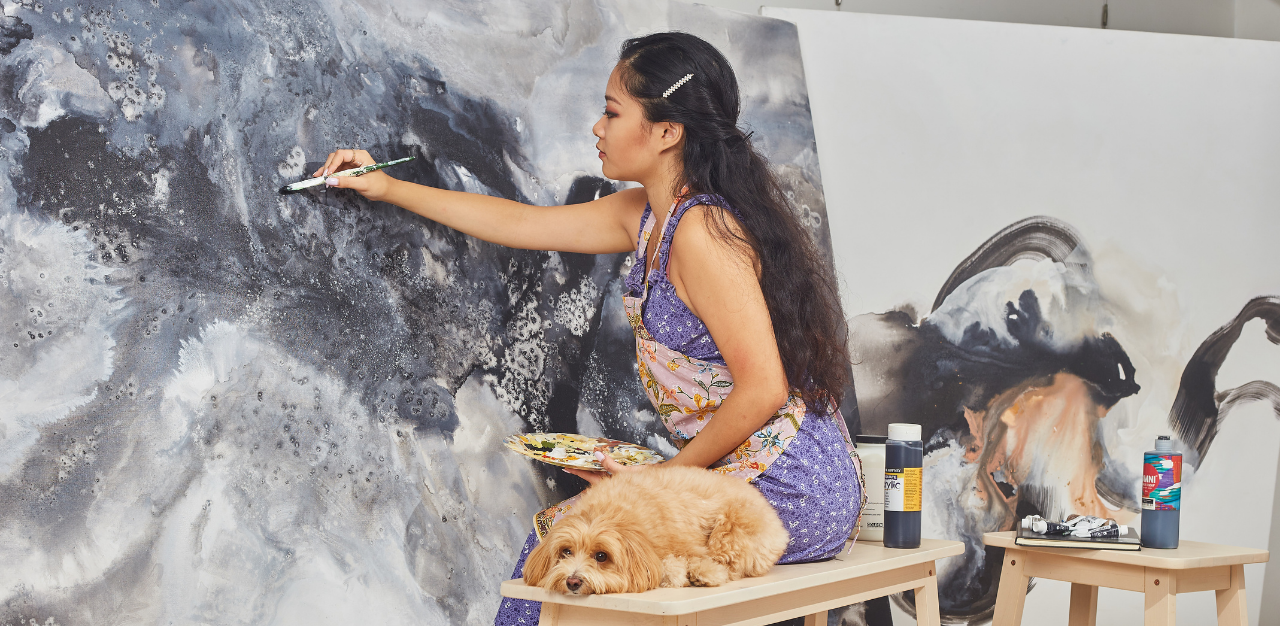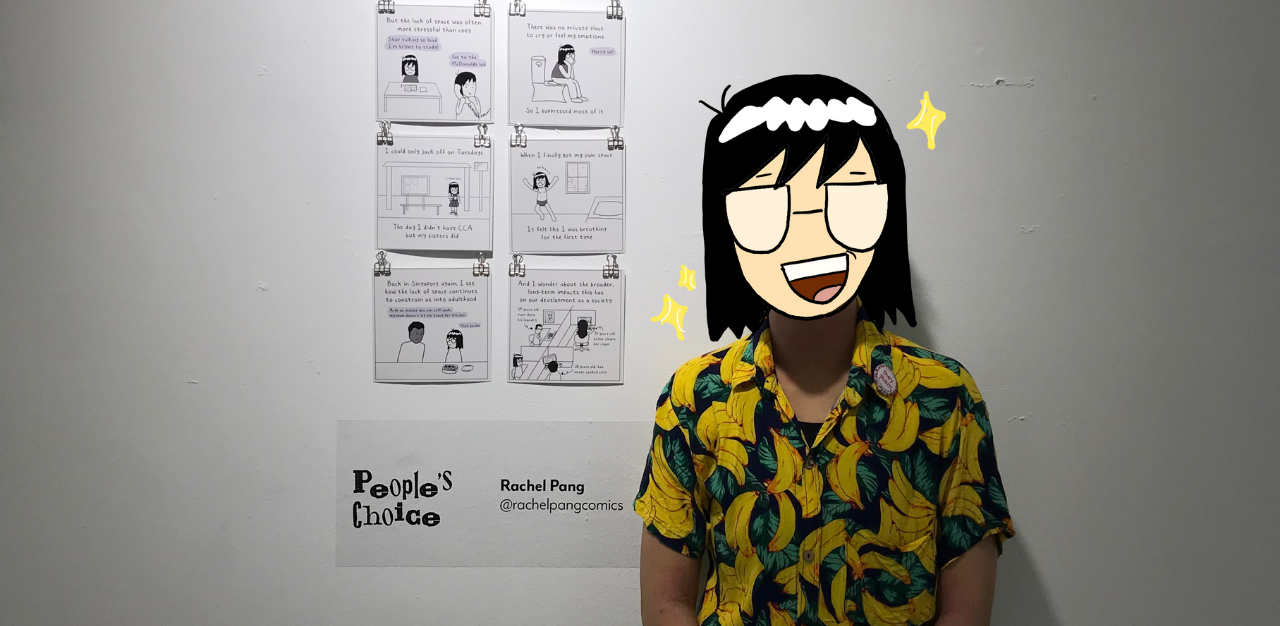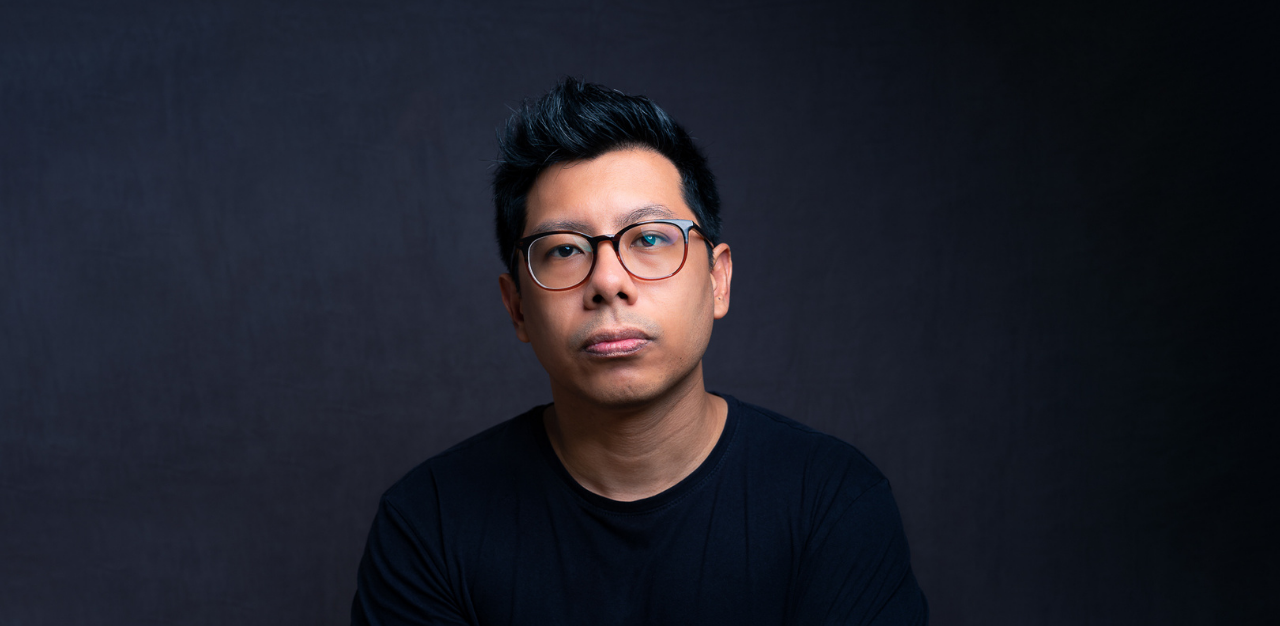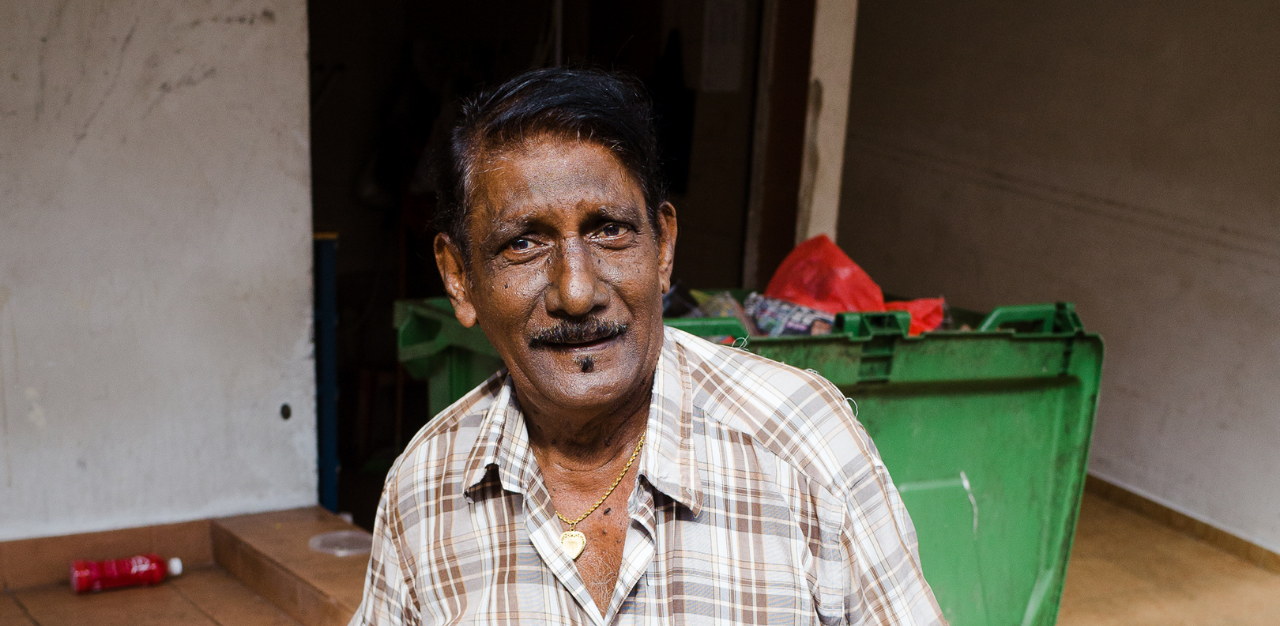The second and last installment of this two-part series explores how artists in Singapore use their work to further social change and empower others, working with marginalised communities, to aid, for instance, in the healing process. TheHomeGround Asia also delves into the difficulties and challenges these artists face. The first part of this series can be found here.
With many artists using their work to further social causes, the arts have proven to do more than influence perspectives. In some ways, it has helped people to heal, such as through art therapy.
Artist Dawn Kwan, 24, is pursuing a Master’s in Art Therapy at the LASALLE College of the Arts in Singapore. She has also embarked on a work attachment with Project X, which provides aid and support to sex workers.
Through her involvement with Project X, Ms Kwan endeavours to reach out to the sex worker community to understand it from their perspective, and to learn about issues such as how people in this line of work negotiate and cope with shame and trauma.
“I do what I can to go for outreach to talk to the community,” she explains. “Even if I’m not [a] part of the sex working community, at least I’m able to understand them on a deeper level, not just [from the perspective of] ‘Oh, I want to help the cause.’ But [to] really understand what kind of social issues they face… It’s not just donating money and saying that I did good.”

Art therapy can benefit everyone, she says, including those with conditions such as dementia and disabilities, to people in a “preverbal stage or who are not able to localise their thoughts.”
“The main idea is that art has a transformative impact on people’s mental health, and [the] experience of art in itself can be very cathartic or grounding, or can help you [do things such as] regulate your emotions,” notes Ms Kwan. “The whole idea of having psychodynamic art therapy is so that the individual can be led to either emotional regulation or better insights into their life.”
READ: Creating change through the arts
Helping others to heal
Chloe Chotrani’s role as a soma practitioner at Soma Clinic has also given her the chance to help those with mild to severe trauma who are “willing to relationally deepen their healing process”.
She notes that trauma is experienced both as an individual and on a collective level, and that all people have “some degree of trauma, both conscious and unconscious”, which manifests as physical tensions due to “signals of unprocessed trauma” that exist in one’s body, which are not always reasoned with or understood.
“I encounter people who notice that their trauma often puts them into vicious loops of anxiety, or sensing residue of painful experiences of abuse, either as a child or even in adult life, and harmful relational dynamics that become a recurring pattern… which affects the way they live every day,” she shares.
But healing comes as part of the artistic process for documentary photographer Jasbir John Singh, who feels that the people he has worked with on various photography projects, would have reached a level of acceptance in processing their personal experiences, in order to share their stories with him.
“For somebody to have to sit down with me, a big cisgender male, they are [likely to] feel intimidated,” he says. “It is often them reaching a point of healing or comfort where they can speak to us about things like this, although it is our responsibility to try and make sure that they know our intention, [such as] where the work is [going to] go.”
Healing artists
In practising their art, artists also enable themselves to process their own personal experiences.
For instance, artist Rachel Pang’s, of Rachel Pang Comics, experiences as an artist have allowed them to “crystallise” a lot of the events that they went through, especially by articulating their experiences and framing them into “coherent narratives”.
“I think the process of creating art is also finding the right words to say and stuff like that is also helpful. When you’re in pain, one of the most helpful steps is to name the pain, articulate what it actually is [and] how it actually feels, [to] be able to trace it back to its roots and figure out how to make it better,” they say.

Mx Pang shares that the validation they receive by putting their work online as an artist is another way to feel seen and connected, such as when they bond over shared sentiments and experiences with others.
“[By] putting it online, people can be like, hey, actually, I experienced that too… [There is] this sense of solidarity and feeling like we’re not alone. So that’s been helpful,” they say.
For Ms Chotrani, working with trauma requires a “willingness to do emotional labour”, and to ensure that she takes care of herself. She achieves this by enforcing firm boundaries or having a strong support system, which builds her capacity to “hold the ground for others”.
She says, “Working this way has changed how I relate and respond to the world; especially how I hold myself, because this work is about holding, relating, and listening to people.”
Empowering others through art
Having collaborated with people from all walks of life, such as those from the migrant worker and sex worker communities, in partnership with NGOs, such as Humanitarian Organization for Migration Economics (HOME) and Project X Singapore, Mr Singh’s photographic projects like Portraits of HOME have empowered his subjects by showcasing an alternate perspective of marginalised communities.

Mr Singh shares that the domestic workers he spoke to think that media representation tends to focus on “success stories” and controversial issues pertaining to their community, rather than the ordinary moments in their lives, such as their dance sessions with one another.
Hearing this sparked his interest to explore a different perspective of them.
“In [Portraits of HOME] we try to concentrate on who these people are, outside of them being just migrant workers. Yanti [Istriyanti], for example, she’s a photographer [in addition to being a domestic worker],” he elaborates. “It was very interesting to see that these people who live in Singapore, who do our chores, clean our houses, cook for us, [and] to a certain extent, educate our kids, actually have these talents outside of their main responsibilities, that are outside of the main reason why they are here. And I feel it’s very wrong that these talents are not being explored.
“At the end of the day we have to look at it [from] a regional standpoint; artists in Singapore are already pretty misrepresented. When you think of a migrant artist, it’s even worse.”
READ: International Women’s Day: Abused but unbeaten
When asked whether his photography has made art more accessible to the public, Mr Singh opines that art is already accessible, be it through online platforms such as YouTube and Instagram, or even via Google. Instead, he suggests that photographers can feature underrepresented voices in their capacity as a “mouthpiece” to draw awareness to these voices.
“I think sometimes the story becomes the particular figure [of a celebrity or photographer or an artist]. I think sometimes we give more importance to who they are and what they are doing, versus the actual subject, which is the people that they are trying to represent. So that’s where perhaps on the ground, artists like ourselves, where instead of making our work the subject, we try to use our work and make [the people they are trying to represent] the subject,” says Mr Singh.
Aside from uplifting communities, empowerment through one’s art also occurs on an individual level by inspiring and comforting others. Take 38-year-old lawyer and photographer Dharma Sadavisan, who shares that his experiences as a guitarist with the now defunct band West Grand Boulevard led to more connections with others that have lasted till the present. He says that people have reached out to him to tell him that his band’s music helped them through difficult times.
“I would say music and photography isn’t always done for the primary purpose of helping people. But I think that the real connections it creates do bring people together and help people through hard times,” Mr Sadavisan says. “I’m still in touch with people who followed [West Grand Boulevard] 10 years ago. And some of these people are now all over the world. We still catch up when they’re in town. There’s still these connections that persist.”

His experiences as a commercial and portrait photographer have also encouraged him to adopt a role that supports others: “I like taking photos of people, because I like sharing that moment of connection with them… If I’m doing commercial projects, I’m trying to help them present themselves or their products in quite literally the best light possible.”
He adds, “I think that’s true for any kind of supporting role, and that’s what that’s what I like – supporting people in their journey towards pursuing their dream. That gets me hyped up.”
Mr Sadavisan shares that photography also provides a platform for social commentary, adding that he makes an effort to do street photography as there are occasions where these photographs compel people to question and reflect on social issues.
On how the local arts community has evolved in terms of creating awareness about social causes, he says that while he cannot speak for the entire local arts community, his sense is that it is driven by the need for self-expression, “with social commentary (if any) expressed in the artist’s own unique way.”

Social change can also broaden people’s perspectives, which Mx Pang aims to achieve through their art. They explain that they hope to encourage people to be more compassionate in approaching one another, and to look at things from a different viewpoint than what they have been taught.
They share, “I always say that I draw comics for myself, and that’s part of it. But then I guess I also hope that like other people who read my comics can be introduced to different ways of seeing the world… and [to] challenge their assumptions in the dominant narrative of what we’ve grown up with.”
The challenges of being an artist
While pursuing art can be deeply fulfilling, it also comes with its fair share of challenges.
Ms Kwan says that the constant expectation of her to push boundaries and create art that surpasses her previous works can be overwhelming and at times, counterproductive. She explains that the process of creating a work of art from “a very authentic place” can be difficult, as one has to take factors such as the material and opportunity cost behind failure into consideration.
“So the best and hardest part would be trying to manage this attitude of celebrating small wins, and telling myself that I’ve done well. And there’s another voice that says try harder, push yourself again. It’s this constant balance between attachment and detachment.”
Constant rejections are one of the hardest things that Mr Singh, who identifies as a humanitarian photographer, has to face in his line of work: “Where there is trust and relationship, there [are] also misconceptions that come with the work that we do.”
He explains that many people have an inaccurate understanding of the intentions of documentary photographers. The perception being that photographers approach these personal stories for their own gain, such as to bolster their portfolios.
But despite these hurdles, being able to continue to tell these important stories of humanity keeps him going: “The day I lose access to taking pictures, or meeting people and getting the opportunity to tell stories, is probably the day, there wouldn’t be any Jasbir John Singh anymore, because that is who I am… Photography has given me that identity.”
Join the conversations on THG’s Facebook and Instagram, and get the latest updates via Telegram.












